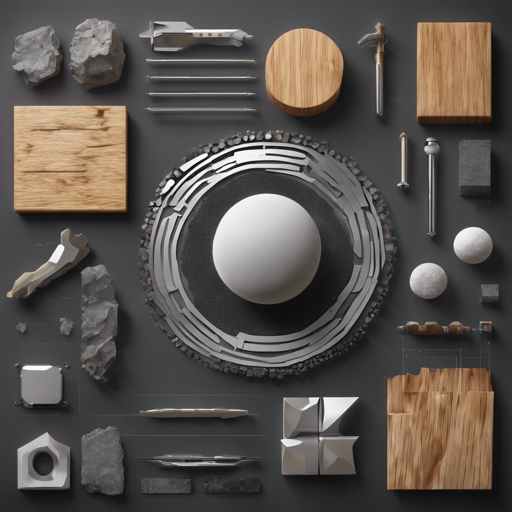Welcome to the fascinating world of MatForger, a powerful generative diffusion model that helps designers create amazing Physically Based Rendering (PBR) materials! Whether you’re a designer, artist, or developer, this guide will walk you through the steps to effectively utilize MatForger to enhance your projects.
Model Overview
MatForger is designed to generate high-quality textures and materials by employing a unique noise rolling technique. It takes inspiration from the MatFuse model and utilizes the extensive MatSynth dataset for training. This model produces multiple texture maps, including basecolor, normal, height, roughness, and metallic maps, catering to diverse design needs.
Features of MatForger
- High-Quality PBR Material Generation: Create detailed and realistic materials.
- Tileable Textures: Generates tileable materials using the noise rolling method.
- Versatile Outputs: Produces a variety of texture maps for complex designs.
- Text and Image Conditioning: Allows material generation through either text prompts or image inputs.
How to Use MatForger
Before you dive in, ensure you have the necessary libraries, especially the diffusers library. Here’s a step-by-step guide on how to set up and use the MatForger model:
import torch
from PIL import Image
from diffusers import DiffusionPipeline
device = torch.device("cuda" if torch.cuda.is_available() else "cpu")
pipe = DiffusionPipeline.from_pretrained(
"gvecchio/MatForger",
trust_remote_code=True,
)
pipe.enable_vae_tiling()
pipe.enable_freeu(s1=0.9, s2=0.2, b1=1.1, b2=1.2)
pipe.to(device)
# Model prompting with image
prompt = Image.open("bricks.png")
image = pipe(
prompt,
guidance_scale=6.0,
height=512,
width=512,
tileable=True,
patched=False,
num_inference_steps=25,
).images[0]
# Model prompting with text
prompt = "terracotta brick wall"
image = pipe(
prompt,
guidance_scale=6.0,
height=512,
width=512,
tileable=True,
patched=False,
num_inference_steps=25,
).images[0]
# Get maps from prediction
basecolor = image.basecolor
normal = image.normal
height = image.height
roughness = image.roughness
metallic = image.metallic
Understanding the Code: An Analogy
Think of using MatForger as cooking a special dish. First, you gather your ingredients (install necessary libraries). Then, you choose a base recipe (load the model with from_pretrained). Next, you prepare your cooking environment (setting the device to either GPU or CPU). After that, you combine your ingredients according to the recipe – in this case, feeding either an image or text prompt to the model to generate your desired texture material. Finally, once everything is cooked to perfection, you can plate it (get various texture maps for use in your project).
Troubleshooting
Encountering issues while working with MatForger? Here are some common troubleshooting ideas:
- Quality Issues: If the generated materials don’t meet your expectations, be patient, and keep experimenting with different prompts. The model was trained on diverse data, but it may struggle with materials that deviate too much from its training distribution.
- Resolution Concerns: The model generates high-resolution materials through latent patching, but it works best at the original 256×256 resolution. Artifacts might appear at higher resolutions, so adjust your expectations accordingly.
- Various Errors: If you experience any unexpected errors, ensure your library versions are up to date and that you have the proper dependencies installed.
For more insights, updates, or to collaborate on AI development projects, stay connected with fxis.ai.
Upcoming Features
The MatForger team is actively enhancing the model and plans to introduce several exciting features in the future:
- Opacity maps for transparent materials.
- Material inpainting to improve generated textures.
- Sketch-based generation to simplify material creation.
- Improved color palette conditioning for precise matches.
- Material estimation from photographs for realistic reproductions.
Contributing to MatForger
Your feedback and contributions are vital for shaping the future of MatForger. Whether you have feature suggestions, dataset contributions, or general feedback, your input will help improve this innovative tool.
At fxis.ai, we believe that such advancements are crucial for the future of AI, as they enable more comprehensive and effective solutions. Our team is continually exploring new methodologies to push the envelope in artificial intelligence, ensuring that our clients benefit from the latest technological innovations.
Conclusion
Now that you’re equipped with the essential knowledge of MatForger, dive in and start creating! With its ability to generate high-quality materials, your design projects will shine with the magic of advanced AI tools.

